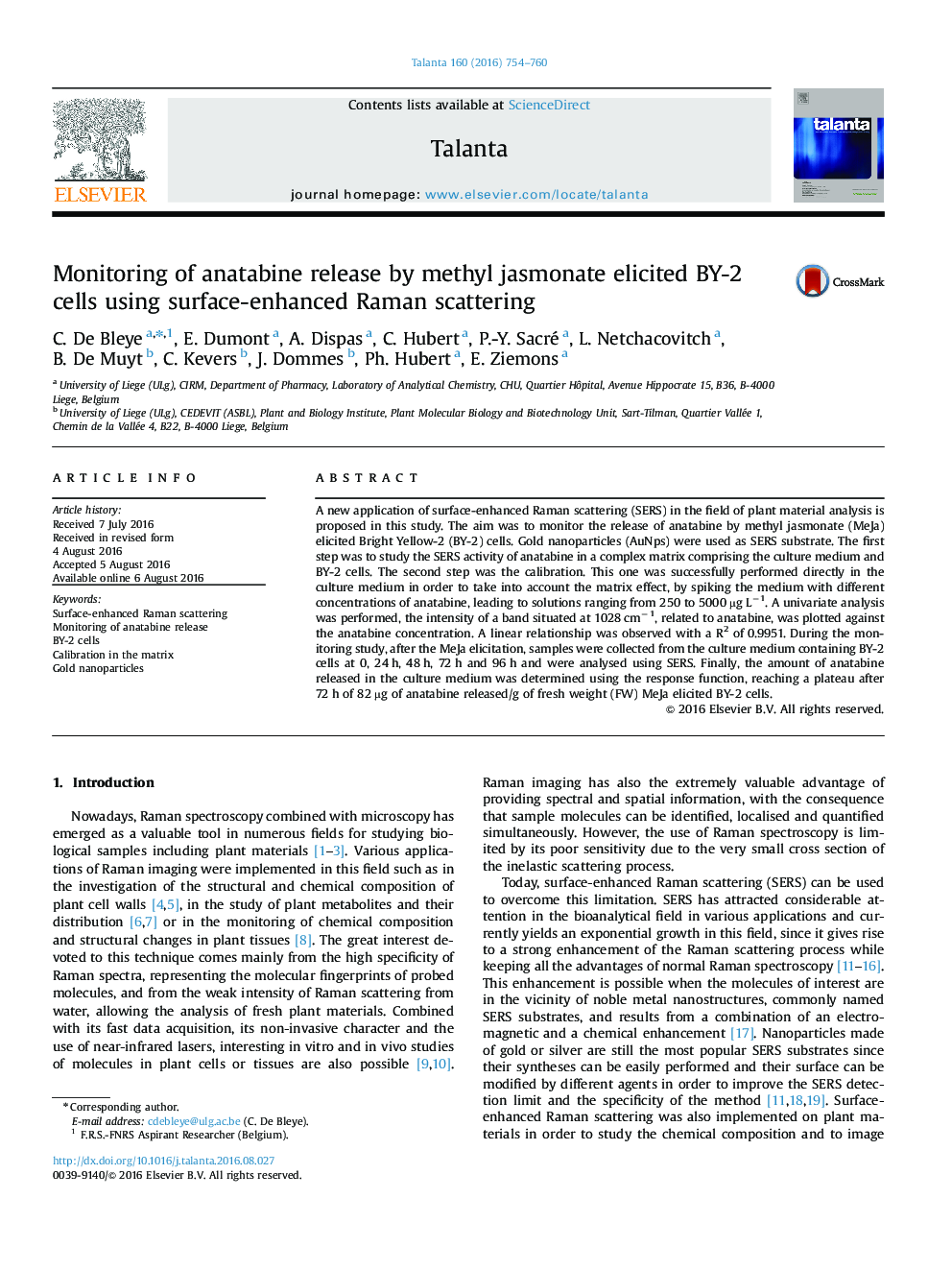| Article ID | Journal | Published Year | Pages | File Type |
|---|---|---|---|---|
| 1243316 | Talanta | 2016 | 7 Pages |
•SERS activity study of anatabine in MS culture medium.•Citrate-reduced gold nanoparticles were used as SERS substrate.•SERS quantitative detection of anatabine from 250 to 5000 µg L−1 in the matrix.•The SERS method is able to monitor the anatabine released by elicited BY-2 cells.
A new application of surface-enhanced Raman scattering (SERS) in the field of plant material analysis is proposed in this study. The aim was to monitor the release of anatabine by methyl jasmonate (MeJa) elicited Bright Yellow-2 (BY-2) cells. Gold nanoparticles (AuNps) were used as SERS substrate. The first step was to study the SERS activity of anatabine in a complex matrix comprising the culture medium and BY-2 cells. The second step was the calibration. This one was successfully performed directly in the culture medium in order to take into account the matrix effect, by spiking the medium with different concentrations of anatabine, leading to solutions ranging from 250 to 5000 µg L−1. A univariate analysis was performed, the intensity of a band situated at 1028 cm−1, related to anatabine, was plotted against the anatabine concentration. A linear relationship was observed with a R2 of 0.9951. During the monitoring study, after the MeJa elicitation, samples were collected from the culture medium containing BY-2 cells at 0, 24 h, 48 h, 72 h and 96 h and were analysed using SERS. Finally, the amount of anatabine released in the culture medium was determined using the response function, reaching a plateau after 72 h of 82 µg of anatabine released/g of fresh weight (FW) MeJa elicited BY-2 cells.
Graphical abstractFigure optionsDownload full-size imageDownload as PowerPoint slide
